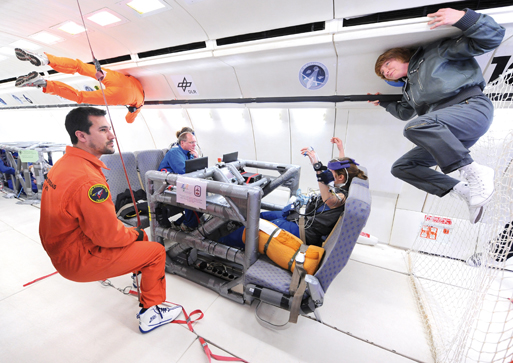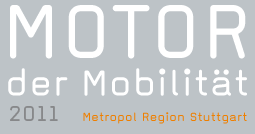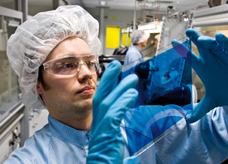Leading the way in research
The Stuttgart region can claim many superlatives for its own. In the field of research, for instance, it can boast of over 3,600 patents annually.
Stuttgart is one of Europe’s strongest research communities. The state capital leads the way in basic and applied research. Research foci include mobility and automobiles, engineering, laser technology, material development, environmental and energy technology, IT and communication technology and software development.
The Fraunhofer Institute, Steinbeis Foundation, Max-Planck Institute, German Aerospace Center and over 140 institutes attached to the University of Stuttgart are represented in the region.
Twelve non-university research institutes, grouped in the “Innovation Alliance Baden-Wuerttemberg” cooperate with local companies to develop ideas into products destined for the global market. The focus is on health, mobility, sustainability and IT. In the Stuttgart Centre for Solar Energy and Hydrogen Research, for instance, a world record was set through the development of thin-layer solar cells with an efficiency level of 20.3 per cent. The natural science and medical institute of the University of Tuebingen developed a method for implanting a sensor chip under the retina. People whose blindness is due to genetically determined retinal degeneration regain limited vision. Another member of the innovation alliance – the Stuttgart Institute for Microelectronics – developed and manufactured the chip. In Denkendorf, the German Institutes for Textile and Fibre Research cover the entire textile value creation chain from molecule to finished product. Innovative materials are manufactured or modified.
Highperformance materials like carbon or ceramics are used in medical engineering and the aerospace industry.
The Stuttgart Institute for Aerospace Systems is Germany’s largest aerospace-oriented university institute. Great importance is attached to cooperating closely with industry. The institute is equipped with many large-scale research facilities like combustion chambers and roll test benches, plasma injection machines and test benches for material testing and laser research.
One of the world’s foremost research centres focusing on solid-state physics is the Physical Institute of the University of Stuttgart. Research topics include metamaterials which are artificially engineered to produce exceptional optical properties. Due to a negative refractive index, they deflect the light in such a way that they become invisible, like a magic hood. An example of how basic research can also open up highly interesting implementation areas is nanoantennas. The principle of antenna fields, used for the long-distance transmission of signals, is miniaturised to nano size. This replica, made of miniscule 100-nanometre gold wire, can be used as a highly sensitive detector in the close-range infrared area.
The German Aerospace Center (DLR) focuses on aerospace, aviation, energy, transport and safety in six Stuttgart research institutes. Major importance is attached to close cooperation with industry. The DLR is equipped with many large-scale research facilities such as combustion chambers and roll test benches, plasma injection systems and test benches for material testing and laser research.
The Historical Institute of the University of Stuttgart gains key research insights into the history of natural sciences and technology. The main focus here is on “past futures”. Back in 1980, for instance, even the experts and future researchers were unable to predict the extent to which the Internet and mobile phone would influence the daily lives of many people in just a few years.

Wired up to measuring equipment, first-time flyers accompany every German Aerospace Center (DLR) parabolic flight












 download .pdf
(428 KB)
download .pdf
(428 KB)